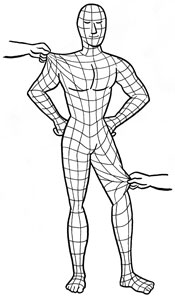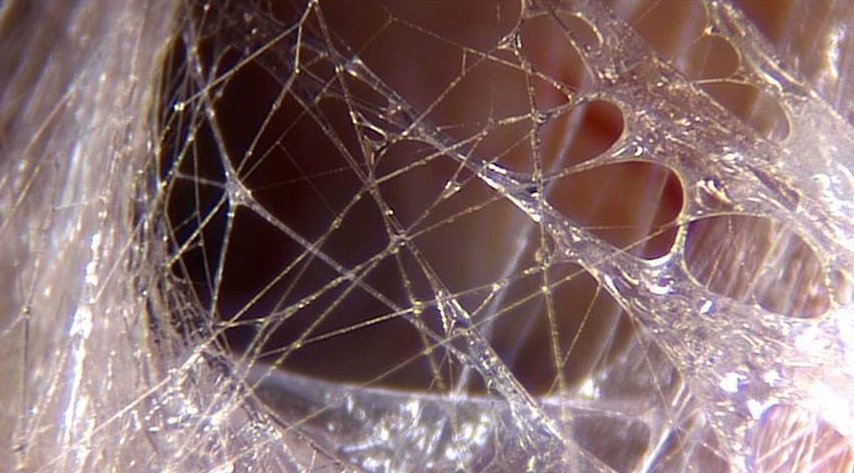The human body is a complex and awe-inspiring marvel of engineering. Beneath the skin and muscle lies an intricate network of connective tissues, muscles, and bones that enable us to move, stand upright, and perform countless other functions. One crucial player in this structural symphony is the fascia, a remarkable tissue that plays a vital role in maintaining the body’s form and function. In this post we’ll discuss the concept of tensegrity of fascia, exploring how it shapes our bodies and influences our overall well-being.
Understanding Fascia
Before we dive into the concept of tensegrity, it’s essential to grasp the basics of fascia. Fascia is a web-like connective tissue made up of mostly collagen, that wraps around muscles, organs, and even individual muscle fibers, forming a continuous and integrated system throughout the body. While it has often been overlooked in traditional anatomy studies, recent research has shed light on the critical role fascia plays in our overall health and functioning.
Fascia serves various functions in the body, including:
- Structural Support: Fascia acts as a three-dimensional framework that supports muscles, bones, and organs. It helps maintain the body’s shape and integrity.
- Transmitting Forces: Fascia transfers mechanical forces generated by muscle contractions and external stresses, distributing them efficiently throughout the body.
- Housing Nerves and Blood Vessels: Nerves and blood vessels travel through fascial pathways, ensuring they reach their intended destinations without compression or constriction.
- Contributing to Homeostasis: Fascia also plays a role in regulating tissue tension and maintaining balance within the body.
Tensegrity: A Structural Marvel
The term “tensegrity” is a portmanteau of “tension” and “integrity.” It refers to a structural principle where elements of a structure are in a state of continuous tension and compression, creating a stable equilibrium. Buckminster Fuller, an architect and visionary thinker, popularized this concept in the 20th century, and it has since found applications in various fields, including biology and anatomy.

In the context of the body, tensegrity is a fundamental concept that describes how fascia interacts with bones, muscles, and other tissues. The fascial system maintains tension and compression forces in a delicate balance, allowing the body to maintain its structure and function effectively.
Key Elements of Fascial Tensegrity:
- Continuous Tension: Fascia is under constant tension, forming a continuous network that surrounds and connects various body parts.
- Compression Elements: Bones, muscles, and other tissues act as compression elements in this system. They provide structural support and resist the tension exerted by the fascia.
- Adaptability: Tensegrity allows the body to adapt to changes in posture, movement, and external forces. It helps distribute stress evenly, reducing the risk of injury.
- Force Distribution: Fascial tensegrity ensures that forces generated by muscle contractions are transmitted efficiently throughout the body, preventing localized stress.
The Fascia’s Influence on Well-being
Understanding the tensegrity of fascia is not merely an academic exercise; it has significant implications for our health and well-being. When the fascial system is balanced and functioning optimally, it contributes to:
- Improved Posture: Tensegrity helps maintain an upright posture by evenly distributing the forces acting on the body, reducing the risk of musculoskeletal issues.
- Enhanced Mobility: A well-functioning fascial system supports smooth and coordinated movement, reducing the likelihood of stiffness and discomfort.
- Injury Prevention: Proper fascial tension distribution minimizes the risk of overuse injuries and strain on specific muscles or joints.
- Pain Management: Tensegrity principles are increasingly being applied in therapies such as myofascial release and structural integration to alleviate chronic pain and improve overall comfort.
Conclusion
The tensegrity of fascia is a fascinating and integral aspect of the human body’s structural design. It highlights the interconnectedness of various tissues, and the crucial role fascia plays in maintaining our form and function. Understanding and appreciating the principles of tensegrity can lead to better physical health, improved movement, and enhanced overall well-being. As research continues to uncover the mysteries of fascia, it opens up exciting possibilities for therapies and practices that harness its potential to promote health and vitality. So, the next time you move, stretch, or simply stand tall, remember the intricate dance of tension and compression within your body’s fascial network.

